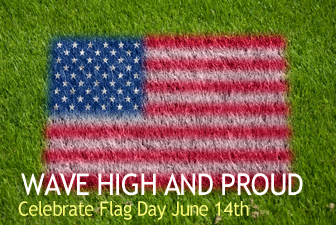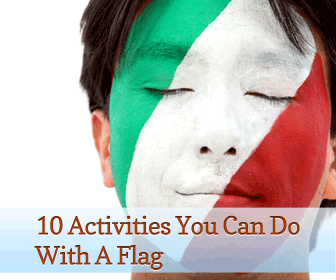Wave High and Proud: Celebrate Flag Day June 14th


Here are some activities you can bring into your classroom with flags raised high.

You can start your flag activities off with a little quiz. Can your students match a set of world flags to their corresponding countries? You can use this online flag quiz or make one of your own by photocopying or color printing some flags of your choice. If you do so, make sure you include the national flags of all the students in your class.
Taking some time to look at world flags is an interesting activity. Make available to your students a variety of world flags and have them take a survey of the colors in those flags. Challenge your students to make a list of all the colors that are used and which are most popular. Why do they think that some colors are used most often? Why are other colors not used?
But why limit your color activities to the colors that the flags use? You can take this starting point as an opportunity to do a comprehensive color review with your students. Busy Teacher has several color worksheets available to you, and you can choose one or more that are most appropriate to your class. Then work together to brainstorm a list of as many English color words as you can think of!
If your students can, have each of them explain to your class the significance of the elements that make up his native country’s flag. For example, the U.S. flag uses the colors red, white and blue because of her historical connection with Great Britain. The stripes represent the thirteen original colonies and the stars represent each of the current states. The design of the U.S. flag has changed over time to reflect the changes in the number of states that are part of the union. Ask your students what they know about their native flag and encourage questions and discussion among your students.
After your students have become familiar with several world flags, have them brainstorm a list of all the different symbols and elements they find among the flags. In groups or as a class, have them discuss why they think these elements have been included and what they mean. Do they think there would have been any better symbols to include on these flags?
Now that your students are thinking about what appears on a flag and why, have them put their heads together to design a class flag. They should discuss what is important about their class and what they think is most essential to represent on the flag. Then give them some basic art materials and let them make a large class flag to display either inside the classroom or near the entrance to the room. If you like, take a picture of this flag and use it as a logo for any correspondence you send home to parents.
Your class has thought about the components that go into making a flag and has designed one for the class. Now have your students each design a personal flag that they can use to represent their lives up until this point. After each student has designed and produced a personal flag, have him or her give a presentation to the class explaining how he or she designed the flag and why the different elements were included.
Each of your students has a personal flag now, so use them to review some basic language skills: use these flags to review prepositions of location. Play a ‘Simon says’ style game where you tell your students to put the flag, “under your desk, over your head, beside your hand…” and several other locations that are expressed with prepositions. If anyone fails to follow the directions correctly, he or she must place his flag face down on the desk and he is out until the next round. Do you want to make the activity more challenging for your students? Actually play Simon Says and practice their listening skills in the process.
You can also challenge your students’ listening skills by playing a short video on how to fold an American flag available on YouTube. After watching this or another similar video, have your students answer some comprehension questions about the process of folding a flag and about the specialized vocabulary that was presented in the video.
Finally, set your students to do some research about a flag that they are not familiar with. You can have them look for information on a state flag or the flag of another nation. If your students write reports on the flags, you can create a display in your classroom displaying the report and its corresponding flag.
With the opportunity flags bring to talk about culture and history, your class will have more respect for and better understanding of their classmates at the end of the unit.